Community Building with the Chicago Home Theater Festival
The Chicago Home Theater Festival, now in its second year, creates participatory performance events in private homes with the goal of crossing borders, creating opportunities for artists to get paid work outside of institutions, and engendering dialogue around issues of community, identity, and the segregated nature of Chicago’s neighborhoods. Co-producer Irina Zadov explains, “We’ve been organizing [the festival] with a real focus on moving audiences to address some of the issues of segregation and the ways in which the arts like so many other things tend to perpetuate these inequalities.”
Each event is hosted by an individual or family (using an expansive definition of “family”) who works with the producers to curate an evening of work responsive to their physical home and particular neighborhood.
It ran May 1-25 in twenty one sites across the city of Chicago. Produced by Irina Zadov, Blake Russell, and Laley Lippard, the festival is part of the International Home Theater Festival, founded five years ago by Philip Huang in Berkeley, and featured the work of 200 artists. Each event is hosted by an individual or family (using an expansive definition of “family”) who works with the producers to curate an evening of work responsive to their physical home and particular neighborhood. Evenings begin with a guided tour from the closest train stop, contextualizing the performance event for audience members who are new to the neighborhood, many include food and/or drink, and all include post-performance discussions. These events are intentionally polyvocal, bringing together people who might not otherwise find themselves in the same room. In an attempt to invoke the festival as a whole, my former students, Allyce Torres, Raven Stubbs, and I each saw different performances and share our impressions below.
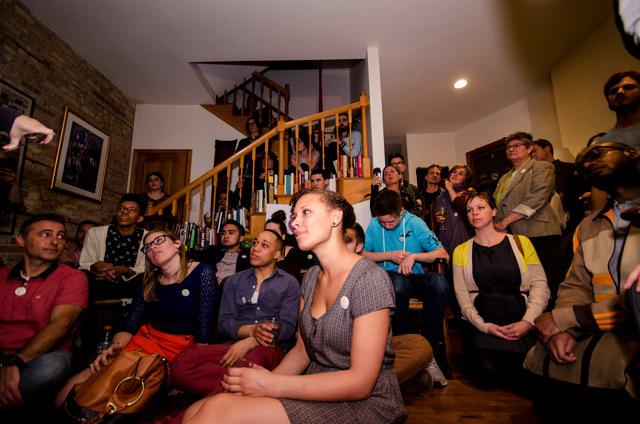
The festival began on April 30 at the Hyde Park Art Center, hosted by John Preus in and around his visual installation The Beast. The Beast is a two-story inhabitable sculpture crafted in part out of materials harvested from recently closed Chicago Public Schools. From the outside, it is an enormous sleeping monster with huge horns. Inside, it contains multiple rooms converging on the “belly of the beast,” a cozily carpeted meeting house/community space in which an opening party can develop. This “housewarming” was the only free event of the festival, and the only event held in a non-domestic space. The Beast invokes the institution of the public school, in all its bureaucratic and politicized glory.
The performance in Grand Crossing was held in LaKeisha Leek and Savannah Wood’s apartments inside one of the newly revitalized buildings designed by social practice installation artist Theaster Gates, who was in attendance. The evening focused on the human hunger for wholeness and Alexandria Eregbu’s performance highlighted this theme. In Leek’s home, Eregbu shared Ofe Owerri soup, offering the Nigerian dish as a performance of part of her identity. She explained to the audience how despite having few cultural inheritances from her Nigerian father, the one thing she could remember experiencing was her father making the Ofe soup. Sitting cross-legged and curled into herself on the floor, she used her hands as a spoon. In this act, she shared her struggle of trying to unite and integrate divergent pieces of her past and present stories. This performance was particularly resonant in Grand Crossing, a neighborhood struggling to reconcile a legacy of poverty with a vibrant community actively working towards revitalization.
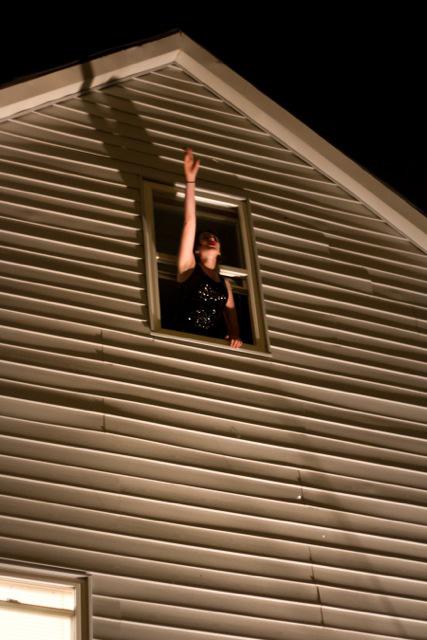
Yvonne Bremas.
The performances in Humboldt Park dazzled Raven with an afternoon of theater about the act of claiming identity. In the three-story home of Coya Paz and her neighbors, artists’ stories engaged matters of racial identity, community and cultural and gender identities. The Scarlet S, directed by Alyssa Vera Ramos and written by Cathy Muskett, was particularly moving. This participatory theater piece challenged contemporary definitions of masculinity and confronted audience members with their role in shaming young women for their sexuality. It invoked the recent sexual assault cases of Daisy Coleman, Audrie Potts, and Rehteah Parsons, all of whom were shamed and bullied after reporting their rapes; the latter two committing suicide under the stress. “Justice is shit. The system failed me,” shouted Ramos and Muskett as they walked through the makeshift aisle, surrounded by audience members who were reading off commentary from the trials. The piece was a powerful reminder of how much gender identity affects how we experience the world.
The performance in Lakeview began with a tour highlighting some of the ways in which the politics of inclusion and exclusion have impacted the development of the Boystown neighborhood, a commercial district most famous for its gay bars and expensive real estate. Guide Micah Salkind pointed out sites formerly occupied by clubs catering primarily to queer blacks, juice bars where Chicago House music developed in all-ages parties, and other businesses that were displaced as the neighborhood gentrified. Host Aymar Jean Christian welcomed the diverse crowd of forty or so people to his duplex with a homemade buffet dinner, beer, and wine.
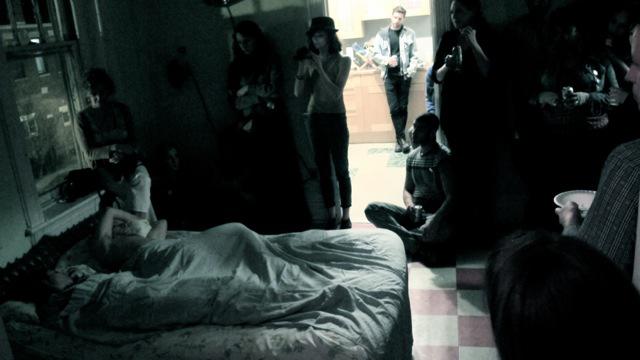
The evening contained a stylistically eclectic set of performances including queer burlesque, vogue dance, and storytelling. The most controversial piece of the evening, Nicholas Ward’s solo performance, A White Dude and His Girlfriend Travel from the North Side to the South Side Without a Car used the length of the apartment to highlight the ways in which a journey across the city with his biracial girlfriend caused discomfort. The piece sparked a lively and nuanced conversation engaging with questions of “who gets to tell what story,” what it means for a performance to be “triggering” and how the politics of inclusion and exclusion impact audience reception.
The May 15 performance in Uptown was hosted by Joshua Kent in St. Francis House, a house of hospitality following in the footsteps of the Catholic Worker movement. The welcoming spirit of the House was heavily infused into the night through a musical welcome, discussion, and a communal dinner—all of which served to establish communication and connection amongst attendees. The night featured a variety of performances ranging from experimental music/dance, film, and dance theater. One of the strongest and most resonant pieces from the evening was a presentation of poetry and writings by Raul Alvarez including a particularly moving piece on the seven days leading up to his mother’s attempted suicide. Alvarez utilized honest, unique, acutely vulnerable and beautiful language in a way that left the audience rapt. The night sparked discussions on mental illness, community, culture, and gentrification—all strong threads in the fabric of Uptown.
“We are about to pass by five galleries that no longer exist,” tour guide and artist Joel Maxime Jr. told Allyce during the May 17 Hyde Park event, “I have young protégés and it’s very hard for them to not be discouraged when they see that what they do no longer exists in this neighborhood. That’s the importance of the home theater fest—it gives them a presence.” The audience was welcomed by Abe Epton and Irina Zadov to the Dacha, an artist collective dedicated to using culture to create social transformation and one of the remaining spaces for artists to work and grow in Hyde Park. In line with the Dacha’s experimental ethos, the audience was invited to view three installation pieces set up throughout the apartment, followed by two slightly more immersive presentations.
Ann Kreitman and Shaina Schrooten’s I Left Your Key Under the Mat, Dear stood out among these performances. It effectively commented on the responsibilities and confines women endure. The piece captivated the audience, and though actions were happening simultaneously in different spaces, the piece as a whole felt cohesive. The night culminated with a film program curated by Felicia Mings entitled Fine Color. It utilized short films from African American and African artists to spark questions about identity, the legacy of beauty, and the difference between who we are and who we pretend to be.
On the whole, the festival operated as a celebration of diverse communities, a space for dialogue and communion, and a model for ways artists can carve out spaces to connect to audiences outside of institutional bounds.
***
With additional reporting by Allyce Torres and Raven Stubbs


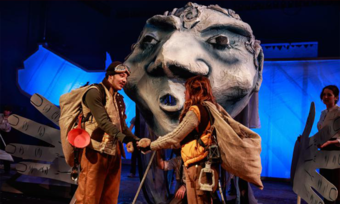

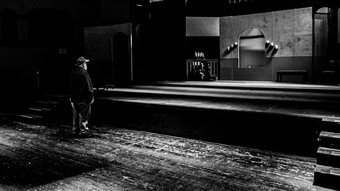


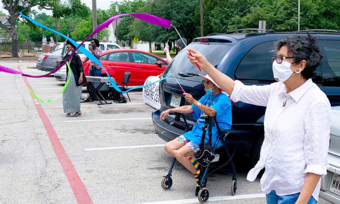

Comments
The article is just the start of the conversation—we want to know what you think about this subject, too! HowlRound is a space for knowledge-sharing, and we welcome spirited, thoughtful, and on-topic dialogue. Find our full comments policy here
Very cool.
Some context if you're interested http://www.chicagoartistsre...